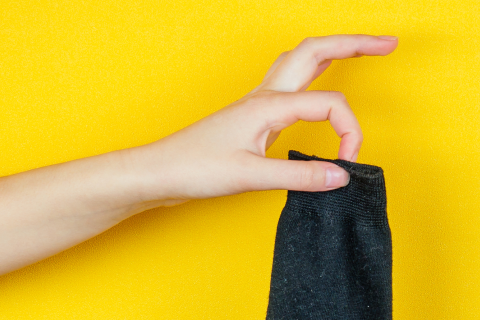At first glance, socks might seem like a small and insignificant part of your wardrobe. But when your drawer is filled with flimsy pairs that wear out after just a few uses, the true cost becomes clear. Cheap socks may offer immediate savings, but their long-term impact—on your comfort, foot health, and wallet—is often much steeper than it seems.
Why Sock Quality Matters
Socks do more than keep your feet warm. They provide support, manage moisture, protect against blisters, and can even prevent foot pain. High-quality socks made with premium materials offer all of these benefits, while low-quality ones tend to fall short.
The seams might irritate your skin, the fabric could lose elasticity after one wash, and thin soles may wear out quickly, offering little to no support. Suddenly, you’re replacing socks more often than you think—and those small costs start adding up.
Frequent Replacements Add Up
Cheap socks often mean frequent replacements. A pair that seems like a bargain today might need replacing in just a few weeks or months. Multiply that over a year, and you're not only spending more but also generating more waste. In contrast, investing in higher quality socks that last longer can actually save you money over time. Fewer purchases mean less clutter in your sock drawer and fewer trips to the store.
Materials Make the Difference
Quality socks are often made from high-performance materials like bamboo, merino wool, or combed cotton. These fabrics are not only more durable but also provide better moisture-wicking, temperature regulation, and comfort throughout the day.
For example, bamboo socks—like those from Hugh Ugoli—offer a silky feel, natural antibacterial properties, and impressive durability. They keep your feet dry and odor-free, making them perfect for long workdays, workouts, or travel.
Design Details That Matter
Cheap socks tend to overlook the finer points of design. Think about seams that rub the wrong way, thin toes that tear, or cuffs that lose their grip after a few washes. In contrast, high-quality socks often include thoughtful features like seamless toes, reinforced heels and arches, and structured support zones.
These design elements aren’t just about luxury—they directly affect foot health and comfort. Seamless toes help prevent blisters, arch support aids in proper alignment, and cushioned soles absorb shock, making every step more comfortable.

Cheap Socks and Foot Health
Wearing low-quality socks over time can lead to problems like calluses, irritation, and even fungal infections due to poor moisture management. If you're prone to sweating or on your feet all day, these issues become even more critical. High-quality socks reduce the risk of such problems by maintaining better hygiene and fit.
Foot health is often overlooked until discomfort or pain sets in. Investing in quality socks is a preventative step—a small but essential move toward better daily comfort and long-term wellness.
Style and Longevity Go Hand in Hand
There’s a noticeable difference in how high-quality socks look and feel over time. Cheap socks lose color, shrink, or stretch out of shape quickly. Meanwhile, premium socks maintain their shape, softness, and color wash after wash. They hold up through countless wears, preserving your style and comfort without the constant need for replacement.
For those who enjoy making a subtle fashion statement, stylish socks are an extension of personal identity. A well-made pair with vibrant colors or patterns not only adds flair to your outfit but also signals attention to detail.
Sustainability and Value
Fast fashion encourages buying cheap, disposable items. But with growing awareness around environmental impact, many consumers are shifting toward fewer, better-quality purchases. Socks are a great place to start.
Buying fewer pairs that last longer reduces waste and supports more ethical manufacturing practices. Brands that focus on quality often prioritize sustainable sourcing and responsible labor conditions.
Final Thoughts
Cheap socks may seem like a good deal in the moment, but the hidden costs—frequent replacements, discomfort, health risks, and waste—add up fast. When you invest in high-quality socks, you’re not just upgrading your wardrobe; you’re choosing long-term value, better performance, and enhanced comfort.
At Hugh Ugoli, we believe that a great pair of socks is worth every penny. Our bamboo collection is designed with seamless construction, breathable materials, and supportive features to keep your feet happy day after day. Because when it comes to socks, it’s not just what you pay up front—it’s what you get in return. If you’re curious about what makes socks truly high-quality, check out our detailed guide on “How Can You Tell Good Quality Socks – Hugh Ugoli Socks” to learn how to spot construction, materials, and design features that matter most.
















